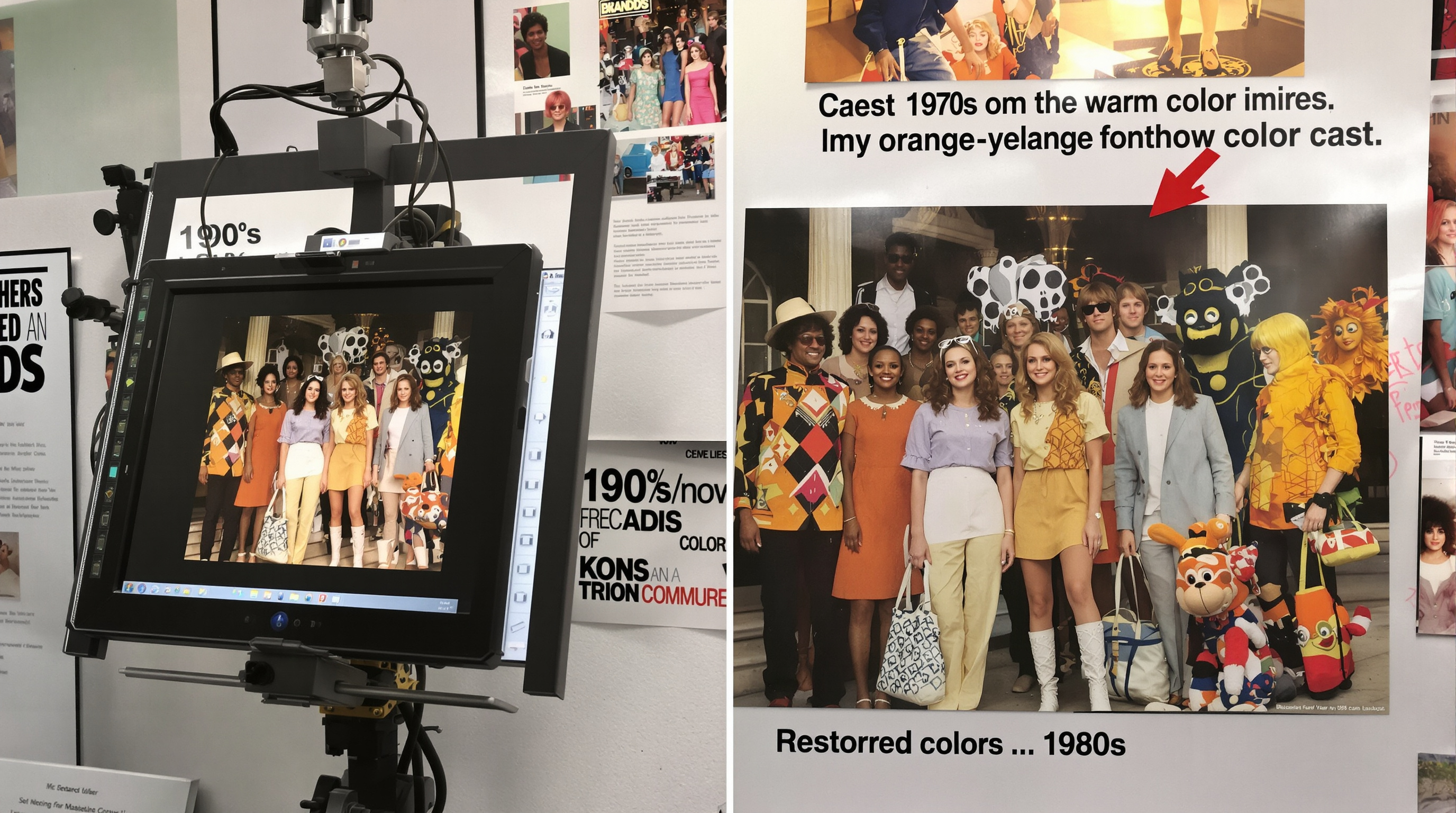From Faded Memories to Digital Legacy
T.K. Broecker / 5 October 2025

Preserving 1970s–1980s Photos: Restore, Digitize & Protect Your Visual Legacy
In an era where memories are captured digitally and stored in clouds, there's something uniquely precious about physical photographs from decades past. Those faded snapshots from the 1970s with their strange color casts and those glossy 1980s portraits showcasing bold fashion choices hold more than just images – they contain our heritage. Today, we explore how to preserve, restore, and digitize these irreplaceable visual treasures to create a lasting legacy for future generations.
The Unique Characteristics of Vintage Photography
Photographs from the 1970s are instantly recognizable by their distinctive color palette. Many exhibit a warm, yellowish-orange tint – a phenomenon caused by the popular C-22 film processing of that era. Kodachrome slides from this period have maintained their vibrant colors remarkably well, but prints often suffered from unstable dyes that gradually shifted toward reddish-brown tones over time.
The technical limitations of 1970s photography actually created what we now view as aesthetic characteristics:
- Muted contrasts and soft focus that give a dreamlike quality
- Yellowish-orange or reddish-brown color casts as dyes degraded
- Squared-off prints with white borders, often featuring the processing date stamped in the margin
- Polaroid instant photos with their distinctive thick white borders and slightly washed-out look
By the 1980s, photography had evolved significantly. Film processing improved with the C-41 process, producing more stable colors. The decade's photography captured the bold and vibrant aesthetic of the era – bright neon colors, high contrast, and stylized poses reflecting the decade's maximalist approach to fashion and design.
Why Restoration Matters: Beyond Nostalgia
Photo restoration isn't simply about nostalgia – it's about cultural preservation. These photographs document everyday life, fashion trends, interior design, and societal norms from pivotal decades in modern history. The 1970s captured the transition from counterculture to disco, while 1980s photography showcased the rise of consumer culture and dramatic shifts in fashion.
Family photographs from these eras provide invaluable genealogical documentation, connecting younger generations with their heritage. When restored and digitized, these images can:
- Serve as primary historical sources for future researchers
- Provide personal connection to family history that might otherwise be lost
- Document changing social customs and cultural practices
- Preserve evidence of architectural styles and urban landscapes now altered or demolished
Each photograph preserved is not just a personal memory but a fragment of collective cultural memory.
The Science and Art of Photo Restoration
Restoring photographs from the 1970s and 1980s presents unique challenges. The chemical composition of photographs from these decades differs substantially from earlier and later periods. The 1970s saw the widespread adoption of chromogenic prints (Type-C prints) which used dye couplers embedded in multiple layers of gelatin.
Professional restoration begins with proper assessment of the particular photographic process used. Key restoration techniques include:
- Color correction to compensate for magenta or yellow color shifts common in 1970s prints
- Digital removal of foxing (brown spots) and mildew damage
- Repair of cracked emulsion and paper tears
- Reconstruction of missing portions using contextual clues
- Contrast adjustment to restore the original impact of 1980s high-fashion photography
The goal of professional restoration isn't to modernize these images but to return them to their original appearance while stabilizing them against further decay. This balance between correction and preservation requires both technical skill and historical knowledge of photographic processes.
Creating a Digital Legacy
Digitizing vintage photographs creates a permanent archive immune to physical degradation. The process involves more than simply scanning – it requires capturing the full range of tones and colors present in the original material. Professional digitization uses calibrated equipment that accurately represents the distinctive visual character of different film types.
Once digitized, photographs benefit from proper digital preservation strategies:
- 3-2-1 backups: three total copies, two different media types, one off-site location
- Archival file formats: use TIFF or DNG rather than lossy compressed formats
- Media migration: regularly move archives to new storage as technology evolves
- Rich metadata: include names, dates, locations, and context
- Curated sharing: create collections accessible to family across distances
For detailed guidance on safeguarding your photos digitally, explore the Library of Congress Personal Digital Archiving resources, which outline best practices for long-term digital preservation.
This combination of physical preservation and digital archiving ensures that the vibrant fashions of the 1980s and the distinctive look of 1970s photography will remain accessible for generations to come, maintaining their cultural significance while strengthening family connections through shared visual heritage.
Keeping Analog Memories Alive
As we look back at these decades through their photographic legacy, we gain not only a window into the past but a richer understanding of our present. By preserving these visual memories – from the strange color casts of 1970s family snapshots to the bold fashion statements captured in 1980s portraits – we maintain crucial connections across generations. The effort to digitize, restore, and properly archive these images ensures that their stories, their cultural significance, and their emotional power remain intact. In this digital age, the preservation of analog memories doesn't just honor the past; it enriches our future by keeping these visual legacies alive for decades to come.
To explore tools and community strategies for long-term preservation, visit the Digital Preservation Coalition’s Community Archives Toolkit.